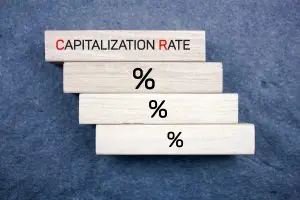Hi everyone, welcome back to Terra Real Estate Learning Center! Today, we’re diving into a crucial topic: How to Navigate Real Estate Investments During Economic Fluctuations. Whether the economy is booming or taking a downturn, understanding how to adapt your strategy is essential for long-term success.
Part 1: Understanding Economic Cycles.
First, it’s essential to understand the fundamentals of economic cycles. The economy goes through phases: growth, recession, recovery, and sometimes slowdown. Each phase affects the real estate market differently — from rising property values during boom times to potential declines in downturns.
Stay informed about key economic indicators, such as interest rates, employment figures, and GDP growth, as they offer insights into the direction the economy is heading.

Part 2: Strategies During Downturns.
During a downturn, the key is to shift your focus from growth to preservation and cash flow.
1. Focus on Cash-Flow Positive Properties. Prioritize properties that generate steady rental income, ensuring you can cover expenses regardless of market conditions.
2. Seek Discounted Deals. Distressed properties or motivated sellers are often more willing to negotiate prices.
3. Look for Short-Term Value-Add Opportunities. Renovations and repositioning can quickly increase property value and rental income.
4. Diversify Your Portfolio. Having a mix of property types or markets can protect you from localized downturns.
Part 3: Opportunities in a Downturn.
While challenging, downturns can also present unique opportunities.
- Buy properties at discounted prices with the potential for appreciation once the market recovers. Investigate foreclosures and REO properties. Both of these options may allow to investors to acquire properties at significant discounts. Please note that purchasing properties at trustee sales (in California) will require all-cash. If you are considering REO properties, some lender will provide some level of financing.
- Be alert for short-sales. In some cases, when a borrower is in default, the borrower may be able to work with the lender to allow the property to be sold at a price lower than the balance of the loan. For years following the “Great Recession” many my investors were able to purchase properties at steep discounts through the short-sale process.
- Reposition distressed properties by improving infrastructure or tenants to boost income.
- Invest in markets that are less cyclical or have strong underlying fundamentals, such as university towns or emerging suburbs.
Part 4: Risk Management and Exit Strategies
- Mitigate Risks. Maintain healthy cash reserves—think of them as your safety net. Use conservative leverage; avoid overextending yourself.
- Have Clear Exit Strategies. Plan whether to hold, refinance, or sell based on current market conditions. Flexibility is your best asset.
Part 5: Lessons
Looking back, during the 2008 financial crisis, some investors who focused on cash flow and bought at distressed prices emerged ahead. For example, in places like Las Vegas and parts of Florida, many bought undervalued properties and held through the recovery, reaping significant gains later. Stay informed of local market conditions.
It is possibly worthwhile to mention that for the early part of my career, I only invested “in my backyard.” Investing in an unknown area always sounded risky… even when my agent was convinced that the area had excellent potential. Even today, I am inclined to stay local.
Part 6: Recommendations
- Whether you are investing in residential income-producing properties or commercial properties, learn how to accurately assemble a reliable cash flow projection covering a 5-year holding period. Accuracy is the key. All income and expense items must be thoroughly investigated. Find a source that will provide a survey of rents, and visit the comparable properties.
- Is the geographical area stable? What is the direction of rents?
- Obtain accurate quotes for various expense items, including property taxes, insurance, utilities, and other relevant costs. Insurance costs were a significant issue with many of my clients. In California, the boundaries of “high fire areas” were revised, and many property owners saw their insurance costs skyrocket. One client experienced an increase in their annual insurance premium from $6,000 to $14,000.
- Also, do not forget about capital expenditures. Large expense items, such as new HVAC systems, roof repairs (or replacement), and significant plumbing issues, can significantly impact your investment.
- Rent control is significant in California if you will be investing in residential properties. Investigate topics such as rent stabilization, rent caps, and security deposits. The laws involving these issues have been described as onerous.
- Finding distressed properties is not easy in California. If you do find a property that may be a good investment, there are likely a dozen other investors looking at the same property. Figure a price that makes sense and stick to it.
- Finally, think about an exit strategy. Compare your projected return from holding to a strategy of selling and reinvesting in an area that may show a higher probability of higher returns.
Conclusion
The takeaway? While economic fluctuations can be intimidating, they also create opportunities for investors. The key is to adapt, stay informed, and focus on the fundamentals of good investing—cash flow, due diligence, and resilience.
If you found this video helpful, please hit the like button, subscribe for more tips, and comment below with your experiences or questions about investing during tough economic times.
Please review all the courses that we offer through Terra Online School. We offer advanced courses in real estate investment analysis, as well as others, which will help improve your expertise in real estate investment. Check out our course, “11 Steps to Successful Real Estate Investing for Your Future.” There is a lot of good information in that course.






